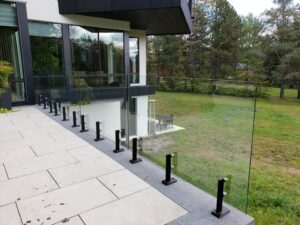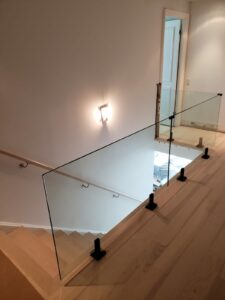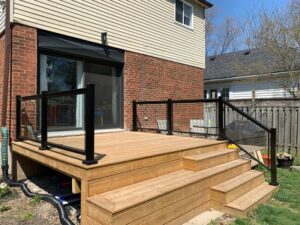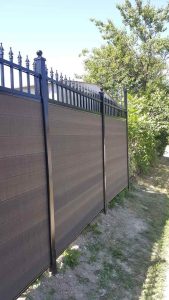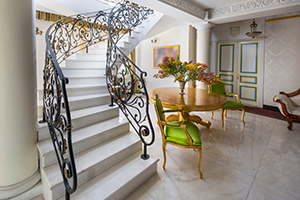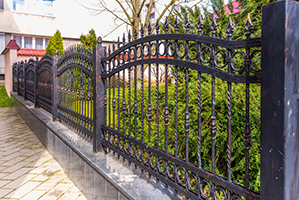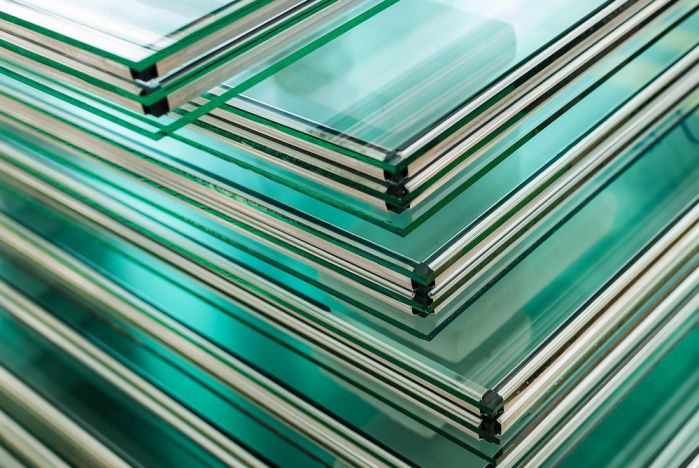Whenever the discussion comes to glass, the question of safety almost automatically comes up. So it is not surprising that the demand for so-called “safety glass” has risen dramatically over the last few years.
In this blog, we will explain the difference between tempered vs laminated glass and its benefits and downsides.
What is Laminated Glass?
Laminated glass is manufactured by taking two pieces of regular or tempered glass and gluing them together with a layer of adhesive resins. The glass sheets are treated to eliminate any air bubbles and pockets before heating if for the first time. When it is heated for the second time, it is done under pressure to get the finished glass product. If additional strength is required, more layers can be added between the sheets of glass.
What are the Benefits of Laminated Glass?
Laminated glass is very strong, a lot stronger than tempered glass. Due to the layer(s) of resin between the sheets of glass, only the side of the impact will shatter, not the full glass. The resin also ensures that the broken pieces will stay together instead of shattering and falling, increasing safety. It can also offer additional soundproofing and block up to 95% of ultraviolet rays.
The main areas of use for laminated glass are vehicle windshields, glass facades and walls, windows and doors and even glass floors. Laminated glass is even used in bulletproofing.
What is Tempered Glass?
To make tempered glass, glass sheets are heated to a very high temperature and then rapidly cooled down. This fast cooling process is what gives the glass its increased strength, and also its name as this heating/cooling process is called ‘tempering.’ The reason for this is that the outside surface of the glass is allowed to harden faster while the centre of the glass remains ‘in tension,’ making it far stronger and more durable than regular glass. Even on a hard impact, it will shatter into small, harmless shards of glass instead of splintering.
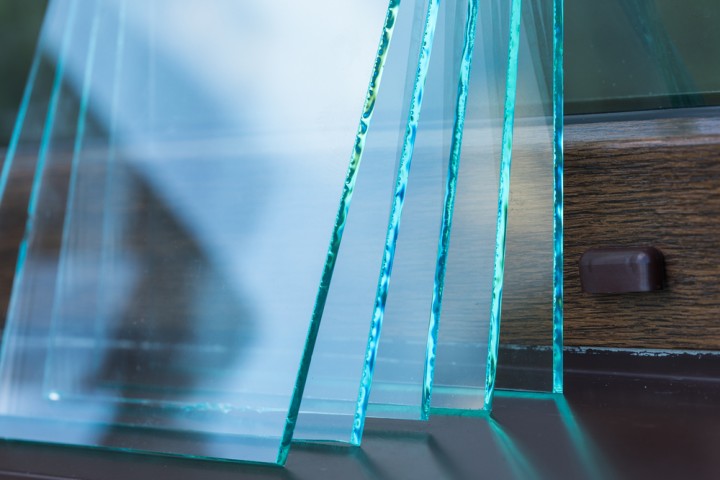
What are the Benefits of Tempered Glass?
The biggest advantage of tempered glass is that it is significantly stronger than standard glass. It will require a very strong force to break it, and even then, it is most likely to shatter in a web-like pattern that, in most cases, will remain in its frame. If the glass shatters enough to fall out of the frame, it is designed to break down into small pieces without jagged and sharp edges.
Due to its increased resistance to breaking, it is often found in high-risk areas. One common use of tempered glass is in the passenger seat and rear windows of cars, glass shower enclosures and doors, countertops and glass walls.
Laminated Glass vs Tempered Glass
| Description | Tempered Glass | Laminated Glass |
| Manufacturing Process | Process involves toughening the glass through “tempering” (heating and rapid cooling of the glass) | Process involves bonding two sheets of glass and a resin layer |
| Strength | Glass shatters into small pieces without jagged edges | Glass holds in place instead of shattering |
| Applications | Passenger seat and rear windows of cars, glass shower enclosures and doors, countertops and glass walls. | Vehicle windshields, glass facades and walls, windows and doors and even glass floors. |
| Pros | – enhances security – durable – safe to use | – safe on shattering – stronger – minor damage can be repaired – gives design options – can soundproof – can screen UV radiation |
| Cons | – cannot be repaired – cannot be cut and processed after the tempering process – low chance of self-explosion | – expensive – more difficult installation – more tough to cut glass – self-explosion with the variation in temperature |
Tempered Glass vs Laminated Glass – Which is Better and How to Choose?
The question of which type of glass is better frequently comes up in discussions about renovation and construction. Several factors influence which type is the best for your application. Tempered glass is often the first choice for its strength and resistance to breaking, while laminated glass is often chosen for flexibility, UV resistance, security and soundproofing. Both types offer different thicknesses and tints or colours and are easy to maintain.
Please note that once tempered glass has gone through the tempering process, it can no longer be cut and customised. If the surface gets pierced, it can cause the glass to explode, so you have to make sure that all sizes are correct before the tempering process begins. Laminated glass can still be cut without any problems.
Also, generally laminated glass is more expensive than tempered glass of the same thickness.
Call Glass Ninja today to find out more about which type of glass is right for you!
Glass Ninja is your choice for any glass project with custom glass and installations. Our expert team of project managers and installers is ready to help you with your next glass or mirror project, whether big or small, simple or complicated. We’re here for you.
Call us today at 833-344-5277 to find out how we can help you with any glass needs.
Frequently Asked Questions
Common uses for tempered glass are glass shower enclosures and doors, countertops and glass walls.
No, tempered glass is manufactured by heating glass sheets and then rapidly cooling them down.
Yes. Due to the resin layer between the glass sheets, the glass will stick to the resin after having been broken without shattering and falling off.
No, once tempered glass is broken, it can’t be repaired and has to be replaced.
Despite being far stronger than regular glass, tempered glass can still break. However, if it shatters and falls out of its frame, it does not produce sharp, jagged shards, making it safer.

